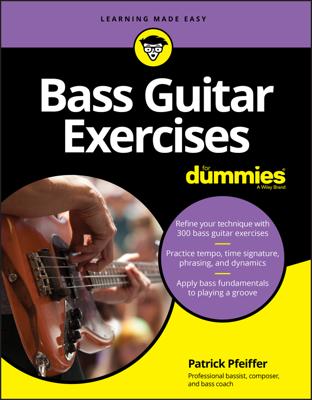Before your hands will be strong enough for hours of bass guitar playing, you need to strengthen them with exercise. Knowing how to warm up using right-hand accents will give your right hand the strength it needs to become coordinated enough to perform complicated fingering techniques, or just endure long hours of bass playing. A few minutes a day with the proper exercises go a long way.
Using right-hand accents will bring you one step closer to creating your own music and introduces accents into your playing. Accenting a note means making it slightly louder than the other notes. To accent a note, just strike the string slightly harder. Accenting allows you to control the volume of each note as you play it, which makes your bass line more interesting.
To simplify the patterns for this exercise, when you see i it means play with your index finger, and m means play with your middle finger.
Start playing the E string with alternating i and m fingers of your right hand.
Accent each note that you strike with your i finger.
Don’t accent a note too hard. If you strike a string too forcefully, the sound becomes distorted, and the tone suffers. (It also tires out your hands very quickly.)
After you get comfortable using your i finger, alternate to accent each note that you strike with your m finger.
Repeat this exercise on the A string, and then move on to the D string and G string.
You want to familiarize yourself with all the strings, because each string has a slightly different feel.
When you’re comfortable accenting with either finger, put the previous instructions into exercise form.
Play evenly, alternating between your i and m fingers.
Think of this as a four-note sequence where you play i m i m.
Now accent the first note of each sequence (the underlined i), making it i m i m, i m i m, i m i m, and so on.
When you have a handle on playing i m i m, start the sequence with m, making it m i m i.
Accent the first note again (this time, the underlined m), making the sequence m i m i, m i m i, m i m i, and so on.
Repeat this exercise on all the strings.
Your notes should always sound clear and controlled. This exercise sounds the same using either finger, which is, of course, the idea.
 The notation for this sequence of right-hand accents.
The notation for this sequence of right-hand accents.

